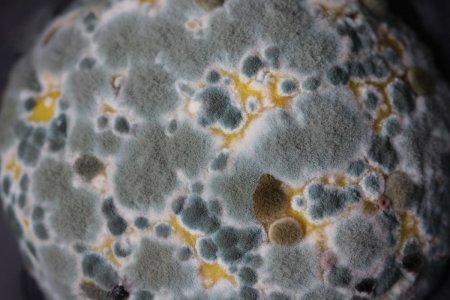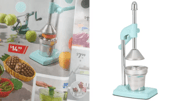Discover the secrets to enhancing your health with these expert mould prevention tips!
A comfy, relaxed time in retirement is everyone’s dream, but there’s no denying the rainy season can introduce a troublesome issue: mould! Thriving in damp, dark areas, mould can be a significant concern in many households, becoming a huge problem if not tackled quickly.
But fret not! At the Seniors Discount Club, we're all about helping you make the most of your golden years, which includes keeping your home in tip-top shape. Today, we're diving deep into the world of mould and mildew to share some expert tips on prevention, control, and treatment so you can enjoy a healthier home environment.

Exposure to mould through airborne spores can trigger allergy symptoms such as blocked nose, irritated eyes and skin, coughing, and wheezing. If you have a respiratory condition like asthma, mould can exacerbate your symptoms. And while mildew is notably less dangerous than mould, it's essential to deal with both to maintain your health.
Dehumidifiers pull the moisture out of the air by taking advantage of the fact that warm air can handily carry more moisture than cold air. The air passes through a filter which extracts the moisture and stores it in a collection tank. This moisture-free air is then re-circulated around the home, making for a dry and mould-free atmosphere.
Using a dehumidifier around the home can be a great way to protect your precious belongings, as excess moisture can cause damage to furniture, clothing and other items. Dehumidifiers can also help protect against health risks posed by mould and mildew, as their spores can aggravate allergies and asthma.
At the end of the day, dehumidifiers are an effective and affordable tool when it comes to combating mould and mildew. By investing in one, you can help ensure your home remains a safe and comfortable environment free of damp, mould, and mildew.
 By following these expert tips, you can create a cleaner and healthier living space free of mould and mildew. So, enjoy a stress-free retirement knowing your household is in pristine condition. Got any other mould reduction tips? Share them with us in the comments below!
By following these expert tips, you can create a cleaner and healthier living space free of mould and mildew. So, enjoy a stress-free retirement knowing your household is in pristine condition. Got any other mould reduction tips? Share them with us in the comments below!
But fret not! At the Seniors Discount Club, we're all about helping you make the most of your golden years, which includes keeping your home in tip-top shape. Today, we're diving deep into the world of mould and mildew to share some expert tips on prevention, control, and treatment so you can enjoy a healthier home environment.

Mould thrives in hidden corners, reminding us of the importance of vigilance and prevention. Photo by Sandy Millar on Unsplash
What is mould?
Mould is a fungus that comes in various forms, including white, green, grey or black. Growing primarily in damp, moist, humid conditions, it sustains itself by feeding off proteins found in organic material like timber, leather, ceilings and walls. The perfect conditions for mould to thrive are often found in our homes during winter, as condensation and heaters create a cosy environment for this intruder. Typical hiding spots include behind furniture, underside of dresser drawers, around windowsills, curtains and cupboards.Health problems caused by mould
Exposure to mould through airborne spores can trigger allergy symptoms such as blocked nose, irritated eyes and skin, coughing, and wheezing. If you have a respiratory condition like asthma, mould can exacerbate your symptoms. And while mildew is notably less dangerous than mould, it's essential to deal with both to maintain your health.
Tips for preventing mould
As both mould and mildew thrive in damp and humid environments, a few critical preventative measures can stop fungi from taking hold in your home:- Keep on top of leaks from taps and showers, and address any signs of water damage immediately.
- Ensure your home has good airflow by opening windows and doors regularly, especially in high-risk rooms like the bathrooms and laundr.
- Invest in a dehumidifier to remove excess moisture from the air if it's too cold or wet to open windows.
- Use moisture absorbers in drawers, wardrobes and cupboards to soak up excess dampness.
How to get rid of mould once you've found it in your home
If mould has already taken up residence, follow these steps:- Dispose of any mouldy items that are unable to be cleaned (e.g., cardboard boxes, mattresses).
- Wash clothing, bedding, and soft toys in a hot cycle laundry machine.
- Clean mould-contaminated surfaces thoroughly with vinegar and a microfibre cloth. Avoid using bleach, as it only removes the colour, not the mould itself.
- Consult a professional for large areas or persistent mould issues.
Common spots around the home where mould grows
- Wardrobes: Ensure clothing is dry before storage and invest in moisture absorbers or a dehumidifier for larger spaces like walk-in wardrobes.
- Bathrooms: Make sure to use an exhaust fan and open windows when possible to create airflow and dry out the space.
- Laundry: Ensure proper ventilation, especially when using a tumble dryer or front-loading washing machines.
Dehumidifiers and Their Effectiveness in Combating Mould and Mildew
Dehumidifiers are a must-have tool when it comes to battling mould and mildew growth in your home. Mould and mildew thrive in damp and humid environments, so in the winter months or when the air-conditioning isn’t quite keeping up, a dehumidifier can help maintain a dry and comfortable atmosphere.Dehumidifiers pull the moisture out of the air by taking advantage of the fact that warm air can handily carry more moisture than cold air. The air passes through a filter which extracts the moisture and stores it in a collection tank. This moisture-free air is then re-circulated around the home, making for a dry and mould-free atmosphere.
Using a dehumidifier around the home can be a great way to protect your precious belongings, as excess moisture can cause damage to furniture, clothing and other items. Dehumidifiers can also help protect against health risks posed by mould and mildew, as their spores can aggravate allergies and asthma.
At the end of the day, dehumidifiers are an effective and affordable tool when it comes to combating mould and mildew. By investing in one, you can help ensure your home remains a safe and comfortable environment free of damp, mould, and mildew.
Key Takeaways
- Mould is a fungus that thrives in damp, dark areas and can cause health problems such as allergies and respiratory issues.
- Prevention is the best way to tackle mould, so maintain good air flow, fix leaks and water damage, and use dehumidifiers or moisture absorbers.
- To get rid of mould, clean affected items and surfaces, then address the source of moisture to prevent future growth.
- Common spots where mould grows include wardrobes, bathrooms and laundries, so take steps to ventilate and properly store items in these areas.







